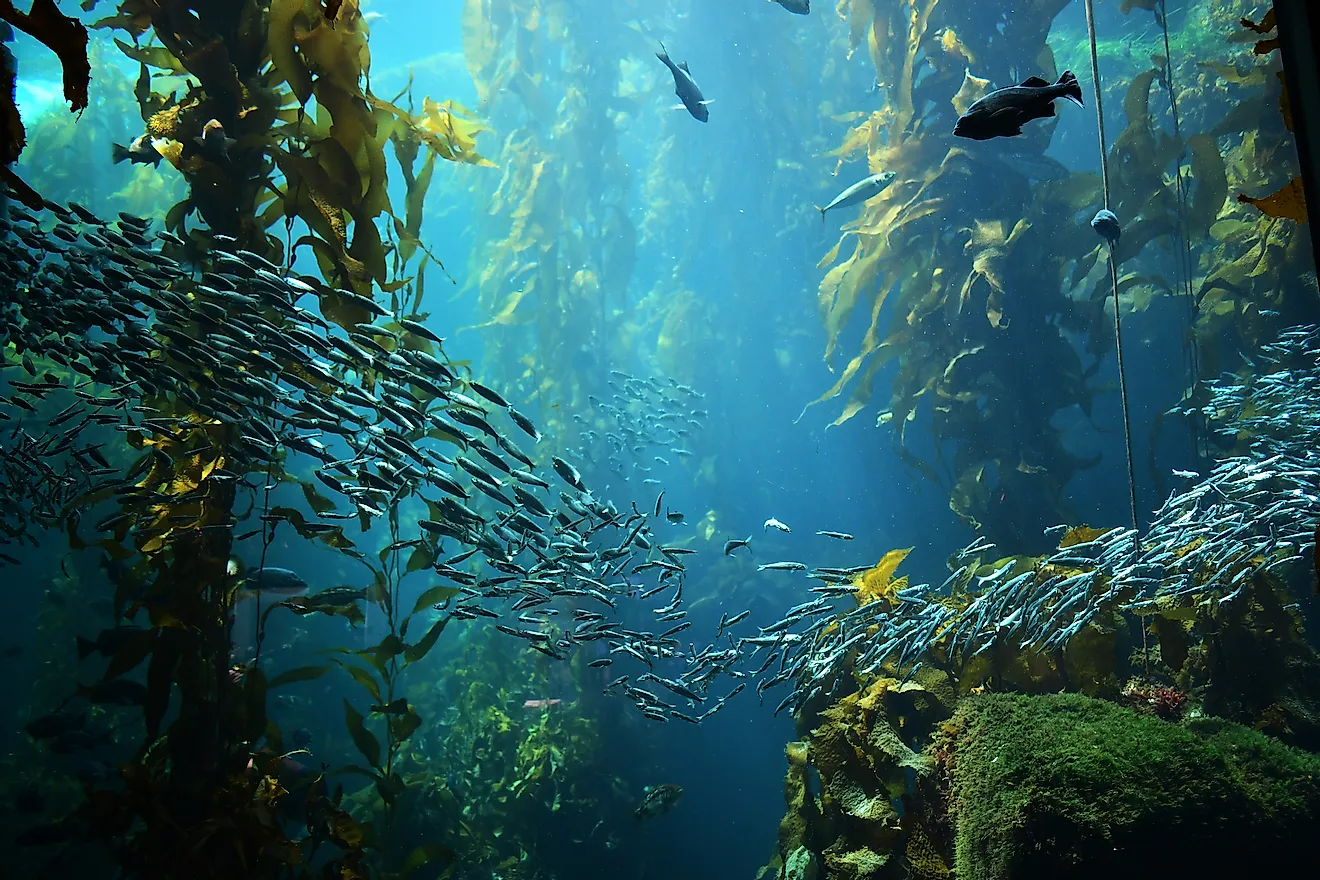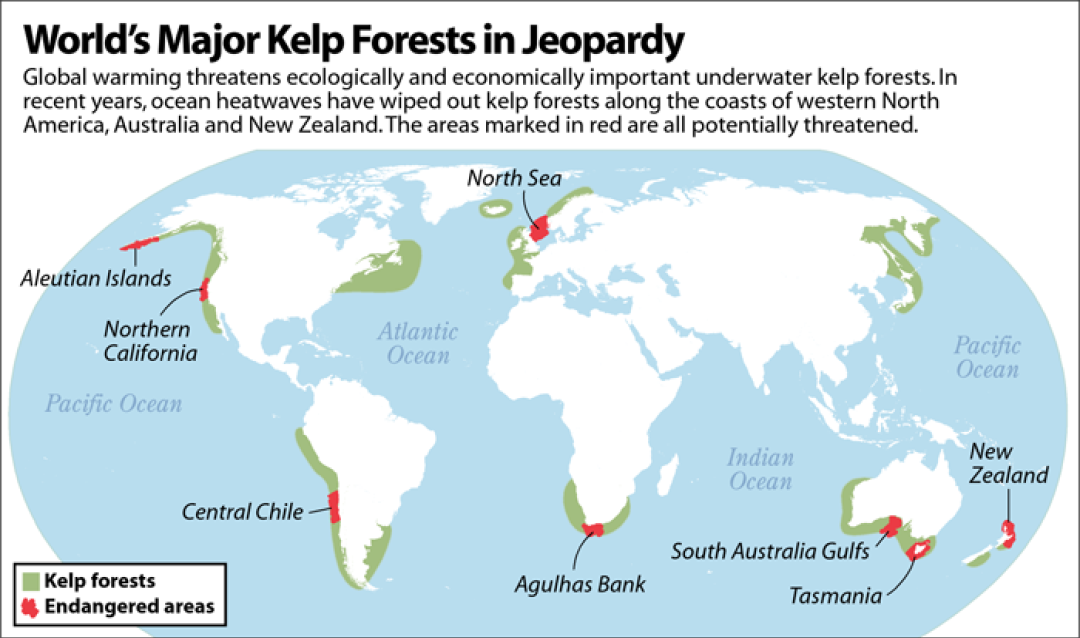Important Facts For Prelims
Kelp Forests on Decline
- 30 Jan 2023
- 2 min read
Why in News?
A recent study has revealed that Kelp forests are declining because of climate change.
What are the Highlights of the Study?
- Ecklonia radiata, a dominant kelp species in the southern hemisphere, is vulnerable to climate change, especially in regions near the equator.
- Rising temperatures are causing declines in the species along the eastern Australian coastline and it is expected to decline further in the future globally.
- In situ protection may not be possible but its unique genetic diversity can be preserved through ex situ preservation in culture banks for use in future restoration, hybridization, or adaptation strategies.
What are the Kelp Forests?
- About:
- Kelp forests are underwater ecosystems formed in shallow water by the dense growth of several different species.
- Kelp are large brown algae that live in cool, relatively shallow waters close to the shore.
- They attach to the seafloor and eventually grow to the water’s surface and rely on sunlight to generate food and energy, kelp forests are always coastal and require shallow, relatively clear water.
- They provide underwater habitats to hundreds of species of invertebrates, fishes, and other algae and have great ecological and economic value.
- Significance:
- It serves as a pertinent food source for a variety of marine creatures. Kelps are responsible for producing up to 60% of the carbon found in coastal invertebrates.
- As a diverse invertebrate and fish ecosystem, they serve as a habitat for birds to forage.
- It releases carbon into the coastal ecology, increasing its productivity. New biomass, detritus, and other materials are produced through primary production by kelp.
- World Distribution of Major Kelp Forests:








